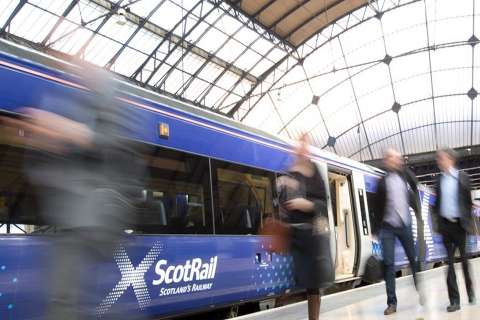New Blues train for Trenitalia’s Sardinia regional service

A new Blues train from Trenitalia’s Regional service is now in operation on the tracks of Sardinia, bringing the average age of the island’s fleet to approximately 7 years, one of the lowest in the entire national landscape. The new Blues train will operate from Cagliari to Sassari and Olbia, connecting the north and south of the island.
Trenitalia operates 181 trains daily in Sardinia, offering approximately 35,000 seats for passengers. Actions undertaken by the leading company of the Passenger Division within the FS Italiane Group have led to an overall improvement in comfort, customer satisfaction, and intermodality development in Sardinia. Customer satisfaction has seen an overall increase between 2017 and 2024, with peaks of +12.2 per cent in comfort. Overall, 96.9 per cent of customers express a positive judgment about their journey.
With the arrival of the new train today, there are now 11 Blues trains currently in operation. The Sardinian fleet is nearing the completion of its renewal process, which will conclude with the arrival of the twelfth and final Blues train by the summer. Currently, Trenitalia trains in circulation in Sardinia consist of 11 four-car Blues trains, 10 Diesel MINUETTO trains, 10 SWING trains, 7 ATR 365 trains, and 5 ALn trains (being phased out).
This is all in line with the Service Contract signed between Trenitalia (the leading company of the Passenger Division within the FS Italiane Group) and the Region of Sardinia in 2017, an agreement that involves approximately 114 million euros in investments.
“The delivery of this new train is a concrete sign of the significant investment program that Trenitalia’s Regional service has implemented in Sardinia. A modern fleet – and in Sardinia, it is one of the youngest in Italy – translates into better quality service, as well as more environmentally, socially, and economically sustainable mobility,” said Maria Annunziata Giaconia, Regional Business and Intermodal Development Director at Trenitalia.
The Blues train
The hybrid Blues trains with dual electric and diesel power are fully compatible with the Sardinian network, as they can be used on both non-electrified lines and those slated for electrification. They offer 300 seats, 8 spaces for bicycles, and are fully accessible for people with reduced mobility. Equipped with a surveillance system, LCD monitors providing real-time information to passengers, and an air conditioning system automatically regulated based on the number of passengers on board.
With its next-generation hybrid technology, it offers better performance in terms of environmental sustainability, reducing fuel consumption and ensuring a significant reduction in CO2 emissions compared to traditional diesel trains, thanks also to the use of batteries when entering and leaving stations. Indeed, it is equipped with batteries that provide more power to the wheels than that provided by the sole thermal engine, useful for providing extra traction especially uphill, with benefits in terms of travel time adherence. This represents a true revolution in the travel experience and improvement in service quality for those who choose the train daily for study or work reasons, as well as supporting the island’s tourism system.
Further reading:




